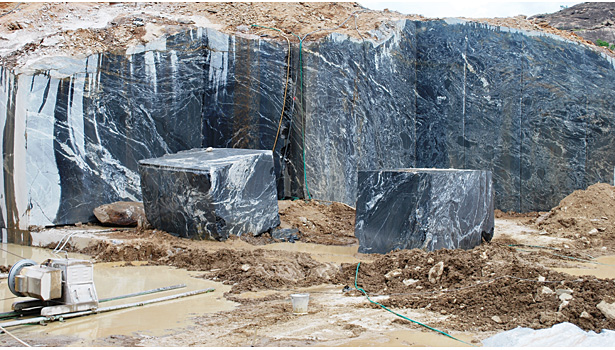Discovering Granite Quarries in South Africa: A Comprehensive Guide
Discovering Granite Quarries in South Africa: A Comprehensive Guide
Blog Article
Discovering the Rich Background and Lasting Practices of Granite Quarrying
As we depend on the precipice of revealing the detailed tapestry of granite quarrying, a trip via time exposes not simply the physical act of removing stone yet likewise the social and historic importance woven right into the extremely material of this technique. From the old beginnings that laid the foundation for modern-day quarrying methods to the lasting practices that are shaping the future of this sector, each carve mark on granite surfaces tells a tale waiting to be uncovered (granite quarries in south africa). The tradition of granite quarrying stretches much beyond plain removal; it is a testimony to human ingenuity, resilience, and the long-lasting appeal of this stunning stone
Old Beginnings of Granite Quarrying
Dating back to ancient worlds, the technique of quarrying granite has actually been an essential part of human history and architectural innovation. The earliest proof of granite quarrying go back to old Egypt, where large pyramids and intricate sculptures were crafted from this long lasting stone. The Egyptians used primitive tools to extract granite blocks from quarries, showcasing the value of this material in their significant constructions.
Progressing in background, the Greeks also made significant payments to the quarrying of granite. The Greeks used granite in various building marvels, such as holy places and statues, showing their ability in shaping and sculpting this durable rock. The Romans additionally fine-tuned the techniques of quarrying granite, employing advanced devices like blades and hammers to essence and form granite for their legendary structures.
Through the centuries, the technique of quarrying granite has actually advanced, with modern-day technologies boosting performance while keeping the classic allure of this natural rock - granite quarries in south africa. From old civilizations to modern builders, the heritage of granite quarrying remains to shape our world
Advancement of Quarrying Techniques
The advancement of quarrying strategies has been noted by a continuous development towards better performance and precision in removing granite. From the basic methods used by our ancestors to the sophisticated technologies used in modern quarrying operations, the industry has undertaken significant advancements. Early quarrying strategies involved manual work with fundamental tools such as knives, hammers, and wedges to extract granite blocks from the planet. As worlds progressed, strategies like fire-setting and primitive explosives were introduced to facilitate the extraction process.
In even more current times, the introduction of machinery transformed the quarrying sector, enabling much faster extraction rates and enhanced performance. Technologies such as ruby cord saws, high-pressure water jets, and pneumatically-driven drills have ended up being common in modern-day quarries, permitting for exact cutting and lowered waste. Advancements in computer-controlled devices and 3D modeling have enhanced quarrying procedures, leading to marginal environmental effect and enhanced sustainability methods. As the demand for granite proceeds to rise, the evolution of quarrying techniques continues to be indispensable to conference market needs efficiently and sustainably.
Social Value of Granite
Granite holds a profound social relevance across various people due to its long-lasting existence in architectural work of arts and revered monoliths. The cultural relevance of granite extends past its physical attributes; it symbolizes durability, stability, and eternity, making it an icon of sustaining heritages and traditions.

Sustainable Practices in Quarrying
Among the abundant background of granite quarrying and its cultural significance lies a growing emphasis on sustainable methods within the sector. As environmental recognition and issues concerning resource exhaustion have heightened worldwide, the quarrying sector has increasingly embraced sustainable methods to decrease its effect on the environment and surrounding communities.

Moreover, recovery and recovery of quarry websites post-extraction are integral to sustainable practices. By restoring quarried areas to an all-natural or advantageous state, such as producing wildlife habitats or recreational rooms, quarriers can balance out the ecological footprint of their operations and add favorably to the local community.
Tradition of Granite Quarrying
With a historical backdrop soaked in craftsmanship and commercial progress, what withstanding effect has granite quarrying left on the landscape of modern-day culture? The heritage of granite quarrying goes beyond simple extraction methods; it has formed building marvels, urban landscapes, and cultural heritage worldwide. The durable nature of granite has actually made it a recommended here selection for monuments, structures, and facilities, standing as a testament to the skill and artistry of quarry employees across generations.
Additionally, the economic footprint of granite quarrying can not be overlooked. The industry proceeds to give job opportunity and drive regional economic climates in regions where granite extraction prevails. It has actually additionally spurred technological developments in quarrying techniques and tools, bring about much more effective and lasting methods.
In regards to sustainability, the tradition of granite quarrying consists of efforts to minimize environmental influences through reclamation projects and liable resource monitoring. By balancing economic interests with environmental stewardship, the sector aims to guarantee that future generations can remain to gain from this enduring natural deposit.
Conclusion

Report this page